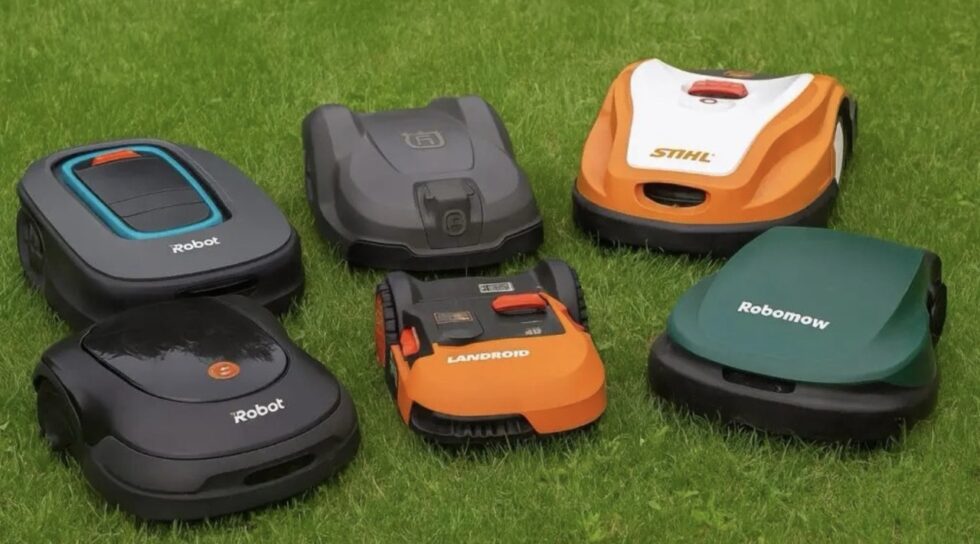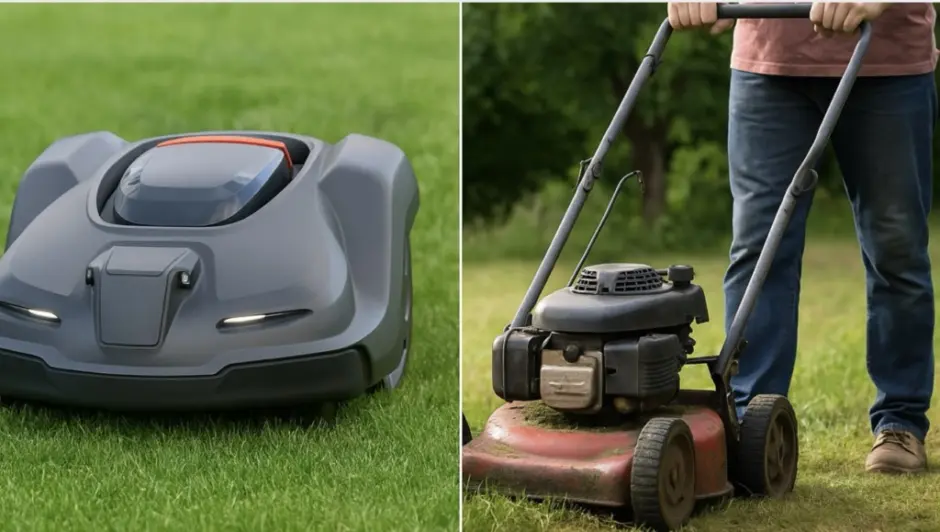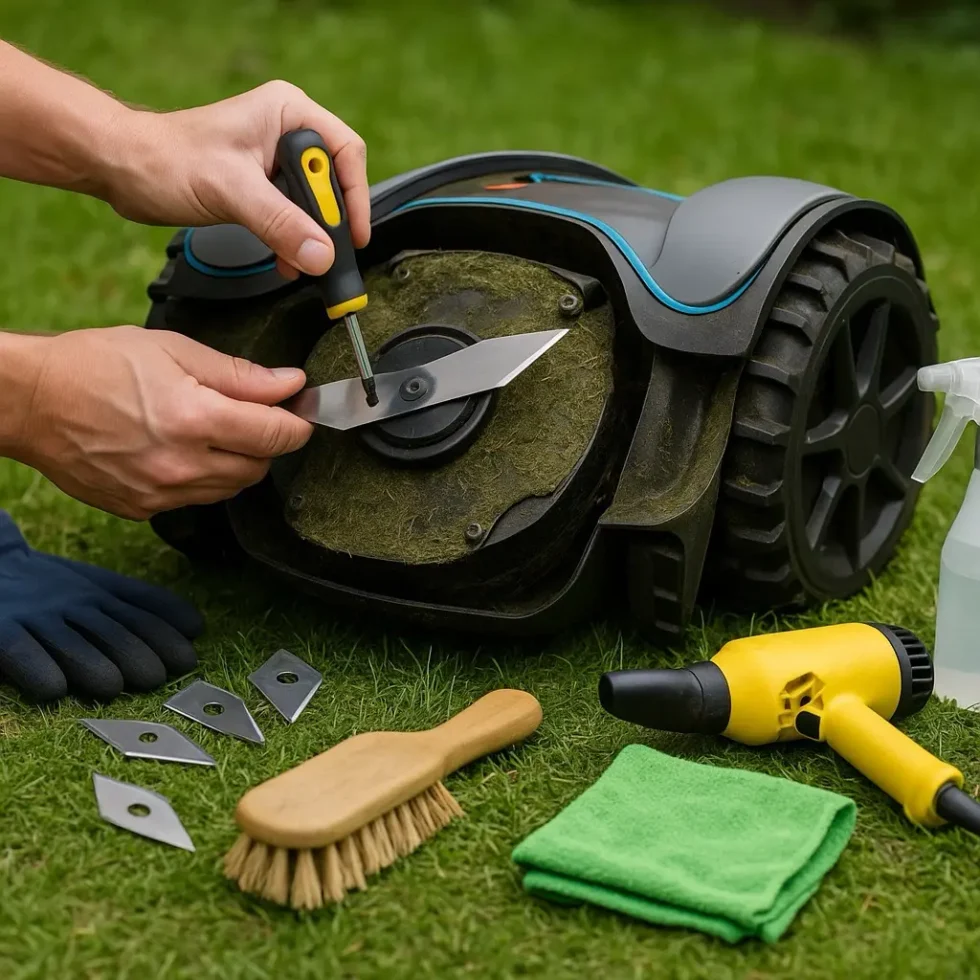What Is a Robotic Lawn Mower – and 7 Reasons Garden Owners Are Choosing One in 2025

A robotic lawn mower is a self-driving electric machine that autonomously cuts grass at regular intervals. Unlike traditional push or petrol mowers, it operates automatically, keeping lawns neatly trimmed without any manual effort. The grass is cut frequently and finely, acting as a natural mulch that promotes lawn health. Gardeners save time, avoid physical strain, and no longer need to plan around mowing. While conventional mowers are used once a week, robotic mowers can operate daily, often in the early morning, leading to denser, greener grass with minimal upkeep.
To help buyers navigate the growing market in 2025, G.Business provides 7 expert tips for choosing the right robotic mower — and how to save money while making a smart, future-proof purchase.
Robotic Mower vs. Classic Lawn Equipment
| Feature | Robotic Mower | Manual Mower | Petrol Mower |
|---|---|---|---|
| Operation | Fully automatic | Manual | Manual |
| Mowing frequency | Daily | Once per week | Once per week |
| Cut quality | Very even | Varies by user | Often coarse |
| Time effort (yearly) | Almost zero | High (60–100 hrs) | High (60–80 hrs) |
| 5-year maintenance | Low (~€150) | Medium (~€400) | High (~€600) |
| Environmental impact | Very low | Low | High (CO₂, noise) |
| Noise level | Quiet (55–65 dB) | Medium (70–80 dB) | Loud (85–100 dB) |
| Comfort | Maximum | Low | Low |

Do Robotic Mowers Save Time and Money
While the initial cost of a robotic mower may be high (starting around €800), the long-term benefits outweigh this for many users. Compared to push mowers (€150–300), a robotic mower saves 70–100 hours of manual labor annually. It runs on electricity instead of fuel, requires fewer replacement parts, and emits no harmful gases. Over five years, robotic mowers often cost less overall than budget petrol mowers once maintenance and labor are factored in.
5-Year Cost Comparison
| Category | Robotic Mower | Manual/Petrol Mower |
| Initial cost | ~€1,000 | €300–400 |
| Operation/Maintenance | ~€200 | €500–800 |
| Time (75 hrs x €15) | €0 | ~€1,125 |
| Total (5 years) | ~€1,200 | €1,900–2,400 |
Why a Robotic Mower Garage Matters
A garage protects your robotic mower from rain, UV rays, dirt, and extreme heat — all of which can shorten its lifespan. It prevents moisture from damaging charging contacts and ensures reliable performance. Basic plastic garages are affordable; wooden ones look more elegant and integrate better with garden design. Some garages even include ventilation, plant holders, or hinged roofs. For GPS or RTK models, garages should have open tops for signal reception.
Maintenance Tips
Even automated devices need care. Blades should be changed every 1–3 months (or after ~50 hours) to avoid damaging grass. The underside should be cleaned every two weeks using a brush or compressed air. Some models tolerate water cleaning. Battery life ranges from 3 to 5 years with proper use. Software updates improve navigation. Store the mower indoors during winter with battery at half charge.
Maintenance Checklist
| Task | Frequency |
| Change blades | Every 4–8 weeks |
| Clean underside | Every 2 weeks |
| Check for updates | Monthly |
| Winter storage prep | Before first frost |
| Battery health check | Once per season |
Downsides to Consider
Robotic mowers aren't ideal for everyone. They're expensive (up to €2,000 for premium models), and complex gardens with narrow paths, steep slopes, or many obstacles can be a challenge. They're not designed for tall or wet grass. Pets and children shouldn't play nearby while the mower is active. Small animals like hedgehogs are at risk if mowing at night — daytime use is recommended. Theft can be a concern, so features like GPS, PIN codes, or geofencing are advisable.
Common Disadvantages
| Issue | Description |
| High upfront cost | Entry level €800–2,000+ |
| Terrain limitations | Not suitable for steep or irregular lawns |
| Pet/wildlife safety | Avoid night mowing; supervise usage |
| Ongoing maintenance | Blades, cleaning, software |
| Theft risk | Use PIN/GPS protection |
How the Best Mowers of 2025 Were Selected
The top 5 robotic mowers of 2025 were chosen for their real-world performance, innovation, design, and reliability. Models were reviewed based on navigation tech (RTK, vision, wire), app features, build quality, and suitability for typical European gardens. Only products with proven customer support, update capabilities, and long-term usability were included.
Top 5 Robotic Mowers 2025 – Premium Class Comparison
| Model | Area | Navigation | Features | Best For | Price (€) |
| Husqvarna 405X | 600 m² | GPS + App + Sensors | Quiet, premium design | Design-conscious users | ~1,599 |
| Segway Navimow H500E | 500 m² | RTK (no wire) | Precision, modern app | Smart home fans, minimalists | ~1,099 |
| Worx Landroid Vision M800 | 800 m² | Vision AI camera | No wires, great edge cutting | Families, beginners | ~1,499 |
| EcoFlow Blade | 800 m² | Visual + Cloud | Voice control, pro setup | Tech-savvy users | ~1,799 |
| Mammotion Luba AWD 1000 | 1,000 m² | RTK + All-wheel | Slope handling, no wires | Large or hilly gardens | ~1,999 |

Buying Smart: How to Choose a Robotic Mower and Save Money
1. Measure before you shop
Know your lawn size in square meters. Buying a model with too much capacity means overpaying, while an underpowered mower may struggle and wear out faster. Models for 300–600 m² are usually enough for small and medium gardens.
2. Avoid overpaying for features you won’t use
Not every garden needs RTK navigation, voice control, or a camera system. Stick to essential functions like reliable app control, scheduling, and rain sensors unless your terrain demands more.
3. Compare long-term cost, not just price tag
A €1,200 mower with low maintenance and electricity use may be cheaper over five years than a €600 mower with high upkeep. Factor in blade replacements, software updates, and time saved.
4. Look for bundles or refurbished models
Many brands offer garage bundles or seasonal promotions. Certified refurbished mowers can save up to 30% and still come with a warranty.
5. Think resale and support
Choose brands with a strong service network and software support. Popular models hold value better if you want to resell in 2–3 years.
6. Invest in a garage upfront
Protecting your mower from the weather can extend its life by years — saving you from premature repairs or battery damage.
7. Use subsidy programs if available
In some regions, energy-efficient outdoor tools (including robotic mowers) may qualify for eco-grants or local subsidies. Check with your local authority.
Also worth reading to stay informed: Building in 2025: Solar Mandates, Green Loans & Tax Reform Reshape German Housing.